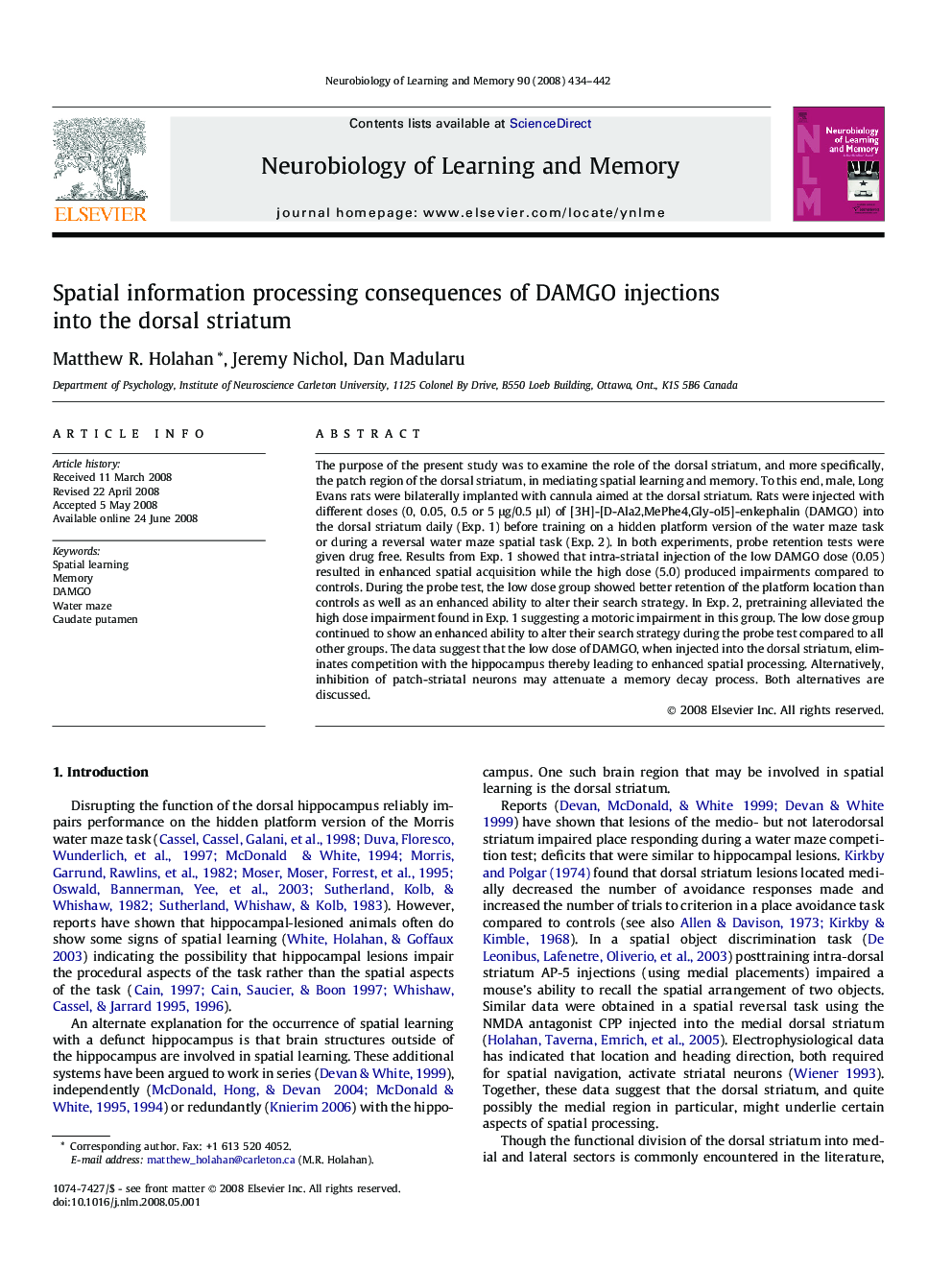| Article ID | Journal | Published Year | Pages | File Type |
|---|---|---|---|---|
| 937111 | Neurobiology of Learning and Memory | 2008 | 9 Pages |
Abstract
The purpose of the present study was to examine the role of the dorsal striatum, and more specifically, the patch region of the dorsal striatum, in mediating spatial learning and memory. To this end, male, Long Evans rats were bilaterally implanted with cannula aimed at the dorsal striatum. Rats were injected with different doses (0, 0.05, 0.5 or 5 μg/0.5 μl) of [3H]-[D-Ala2,MePhe4,Gly-ol5]-enkephalin (DAMGO) into the dorsal striatum daily (Exp. 1) before training on a hidden platform version of the water maze task or during a reversal water maze spatial task (Exp. 2). In both experiments, probe retention tests were given drug free. Results from Exp. 1 showed that intra-striatal injection of the low DAMGO dose (0.05) resulted in enhanced spatial acquisition while the high dose (5.0) produced impairments compared to controls. During the probe test, the low dose group showed better retention of the platform location than controls as well as an enhanced ability to alter their search strategy. In Exp. 2, pretraining alleviated the high dose impairment found in Exp. 1 suggesting a motoric impairment in this group. The low dose group continued to show an enhanced ability to alter their search strategy during the probe test compared to all other groups. The data suggest that the low dose of DAMGO, when injected into the dorsal striatum, eliminates competition with the hippocampus thereby leading to enhanced spatial processing. Alternatively, inhibition of patch-striatal neurons may attenuate a memory decay process. Both alternatives are discussed.
Related Topics
Life Sciences
Neuroscience
Behavioral Neuroscience
Authors
Matthew R. Holahan, Jeremy Nichol, Dan Madularu,
